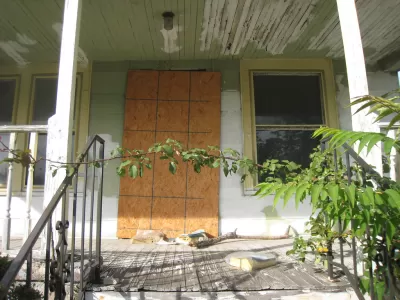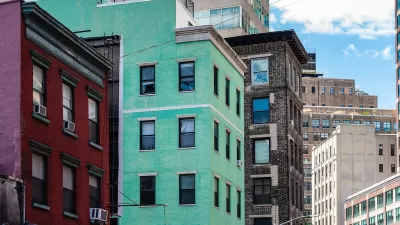On the promise of ownership, rent-to-own landlords make tenants pay for repairs. And on the lower end, homes often come with code violations built in. This market's legal grey spaces distinctly echo 2008.

Alexandra Stevenson and Matthew Goldstein take a deeply critical look at the rising phenomenon of "rent-to-own" deals, where landlords foist repair costs off on their tenants in exchange for a promise of eventual ownership. These deals tend to place all the risk on renters, saving none at all for the landlord.
This is predictably problematic, especially for lower-income tenants. "Most tenants walk away with nothing, having sunk money for rent and repairs into homes they had once hoped to own. Others faced surprise evictions, having signed a contract that did not disclose what repairs were needed, yet set a deadline for making sure the home was up to local housing code."
In many cases, these fair-on-the-face deals conceal legal untidiness and hidden costs that bring the mortgage crisis to mind. "Unlike most typical home purchases, rent-to-own contracts have no requirement to obtain an independent home inspection. The customers contend they were not informed of outstanding issues with Vision homes, many of which the company had bought for $10,000 or less."
Failing to properly fix up these properties carries the risk of eviction. "Tenants who are evicted during the tenure of these seven-year contracts walk away empty-handed, receiving no credit for money spent on repairs or renovations."
What's driving rent-to-own? The same "dream" that drove the mortgage crisis. As one rent-to-own executive argued, "[rent-to-own] is bringing the dream of homeownership to Americans who lack good credit or are too poor to qualify for mortgages."
FULL STORY: Rent-to-Own Homes: A Win-Win for Landlords, a Risk for Struggling Tenants

Alabama: Trump Terminates Settlements for Black Communities Harmed By Raw Sewage
Trump deemed the landmark civil rights agreement “illegal DEI and environmental justice policy.”

Planetizen Federal Action Tracker
A weekly monitor of how Trump’s orders and actions are impacting planners and planning in America.

The 120 Year Old Tiny Home Villages That Sheltered San Francisco’s Earthquake Refugees
More than a century ago, San Francisco mobilized to house thousands of residents displaced by the 1906 earthquake. Could their strategy offer a model for the present?

In Both Crashes and Crime, Public Transportation is Far Safer than Driving
Contrary to popular assumptions, public transportation has far lower crash and crime rates than automobile travel. For safer communities, improve and encourage transit travel.

Report: Zoning Reforms Should Complement Nashville’s Ambitious Transit Plan
Without reform, restrictive zoning codes will limit the impact of the city’s planned transit expansion and could exclude some of the residents who depend on transit the most.

Judge Orders Release of Frozen IRA, IIJA Funding
The decision is a victory for environmental groups who charged that freezing funds for critical infrastructure and disaster response programs caused “real and irreparable harm” to communities.
Urban Design for Planners 1: Software Tools
This six-course series explores essential urban design concepts using open source software and equips planners with the tools they need to participate fully in the urban design process.
Planning for Universal Design
Learn the tools for implementing Universal Design in planning regulations.
Clanton & Associates, Inc.
Jessamine County Fiscal Court
Institute for Housing and Urban Development Studies (IHS)
City of Grandview
Harvard GSD Executive Education
Toledo-Lucas County Plan Commissions
Salt Lake City
NYU Wagner Graduate School of Public Service





























